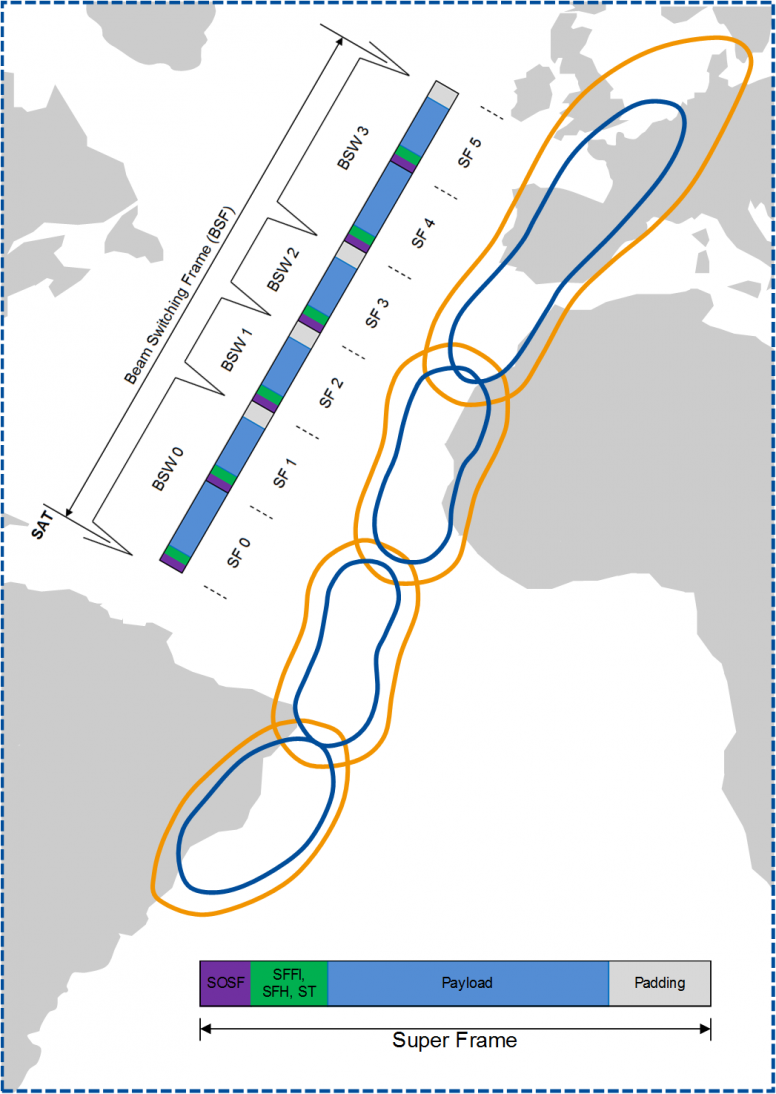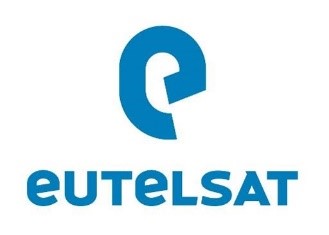
-
StatusCompleted
-
Status date2018-10-15
-
Activity Code3A.072
Beam hopping is an emerging technique to enhance flexibility, agility, and throughput of satellite systems. Due to adaptive activation/deactivation of beams according to the actual traffic demands, congestion problems are mitigated and the power efficiency is improved, compared to conventional systems with quasi-static illumination.
The project objectives are the following:
- Demonstration of a complete signal transmission chain providing beam hopping network emulation
- Enhancement of a wideband modulator (capable of DVB-S2X Annex E, Super-Framing Format 4) to provide beam aligned data streams
- Establishment of a beam hopping emulator hardware to emulate the satellite
- Evolvement of a terminal device (capable of DVB-S2X Annex E, Super-Framing Format 4) to operate with bursty receive signals
- Development, optimization, and showcasing of network synchronization techniques between gateway and satellite based on feedback from a reference terminal implementation
- Analysis, testing and evaluation of different system configurations (cf. example in figure) using the developed testbed
- Performing an over-the-air test to demonstrate the maturity of the developed concept and its implementation in hardware

One of the key challenges of the project is the alignment between user data traffic, addressed beam and signalling the beam switching to the satellite in a synchronized manner. Next to that the provision of a DVB-S2X conform terminal coping with burst-wise data reception is of key importance, where special signal processing and synchronization techniques are required. More specifically, a reference terminal provides means for alignment of the modulator transmission and the beam switching window with an accuracy of only a few symbols.
The entire testbed finally serves as proof-of-concept for the ground segment technologies required to enable beam hopping in future missions like Eutelsat’s Quantum project. The close cooperation between the technology providers Fraunhofer IIS and WORK Microwave with technical support from Eutelsat allows for a most realistic emulation of the Quantum payload and the optimization of the ground segment to enable a successful deployment after system launch.
On the other hand, the testbed will also be capable to host other payload characteristics or payload emulations by means of usage of standard L-Band interfaces for the signal transmission path as well as standard IP interfaces for the interaction between modulator and reference terminal.
Consequently, the testbed devices are used in the final phase of the project also for over-the-air tests. Due to usage of a conventional bent-pipe satellite, the payload emulator is placed in the uplink transmission chain. So all developed beam hopping techniques are verified over-the-air as well.
The chosen waveform, DVB-S2X Annex-E Super-Frame Format 4, is considered the best candidate in order to show a comprehensive proof-of-concept since it supports:
- Operation under low SNR ensuring proper signal detection
- Wideband processing by means of time slicing for throughput maximization and efficient user data multiplexing
- Dynamic Super-Frame padding for termination of transmission minimizing overhead and being adjustable to padding demands
Other waveforms (no Super-Framing) or even other Super-Frame Formats have not shown any advantage against the selected waveform.
- Implementation and test of special beam hopping network synchronization schemes
- Reference terminal for network monitoring
- Modulator with beam hopping-specific flexibility
- Automated procedures for network acquisition and configuration verified in lab and over-the-air
- Wideband transmission over L-band
- End-to-end data transmission in a beam-hopping system
- DVB-S2X conform implementation of beam-hopping
- All roll-offs: 5%, 10%, 15%, 20%, 25%, 35%
- All MODCODs: QPSK … 256 APSK
The hardware testbed (as visualized in the figure) consists of four key components:
- Wideband modulator that runs network synchronization algorithms
- Payload emulator that handles switching to different outputs according to a reconfigurable beam switching time plan (BSTP) relative to its internal clock
- Reference terminal that estimates various offsets from the bursty input signal and provides feedback to the modulator-side synchronization algorithms
- User terminal for demodulation and decoding of the bursty input signal

|
Milestones & Meetings |
Planned Schedule |
|
|
KO |
Kick-Off Meeting |
February 2016 |
|
SDR |
System Design Review |
July 2016 |
|
BDR |
Baseline Design Review |
December 2016 |
|
TRR |
Test Readiness Review |
December 2017 |
|
OTR |
Over-The-Air Test Readiness |
May 2018 |
|
VR |
Validation Review |
October 2018 |
|
FR |
Final Review |
January 2019 |
|
FP |
Final Presentation |
January 2019 |
Successfully completed (February 2019)




